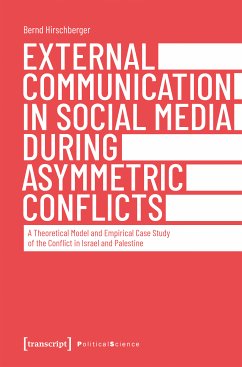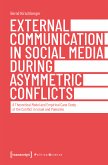Social media increasingly shapes the way in which we perceive conflicts and conflict parties abroad. Conflict parties, therefore, have started using social media strategically to influence public opinion abroad. This book explores the phenomenon by examining, (1) which strategies of external communication conflict parties use during asymmetric conflicts and (2) what shapes the selection of these communication strategies. In a comprehensive case study of the conflict in Israel and Palestine, Bernd Hirschberger shows that the selection of strategies of external communication is shaped by the (asymmetric) conflict structure.
Dieser Download kann aus rechtlichen Gründen nur mit Rechnungsadresse in A, D ausgeliefert werden.









